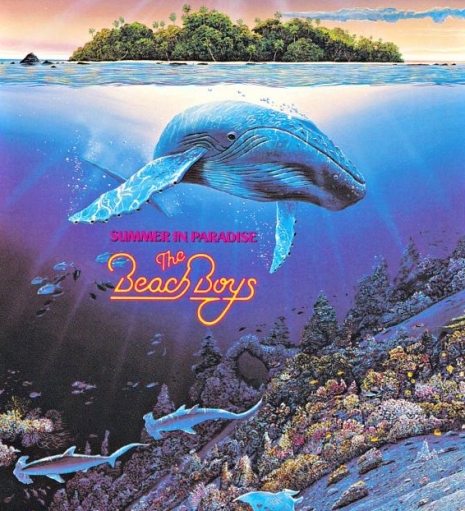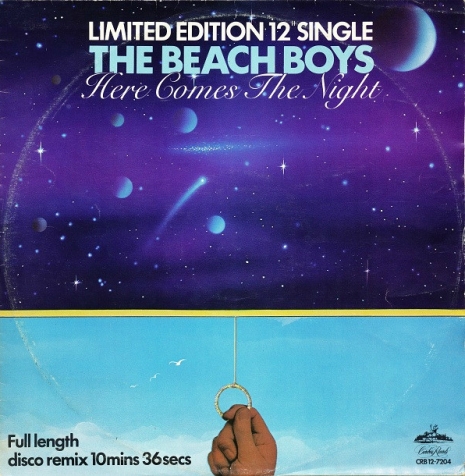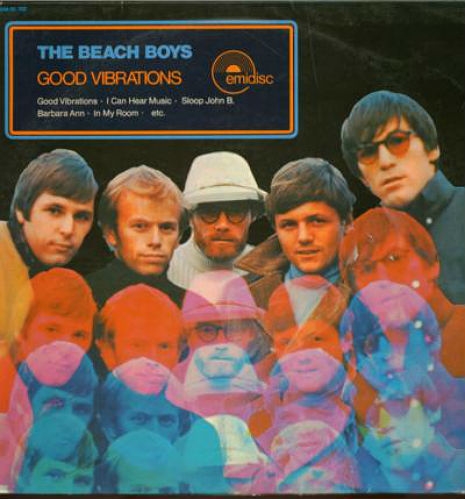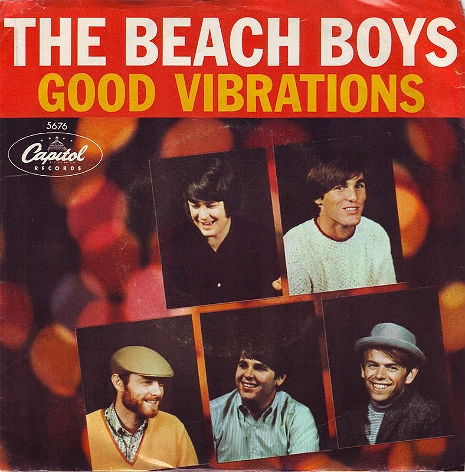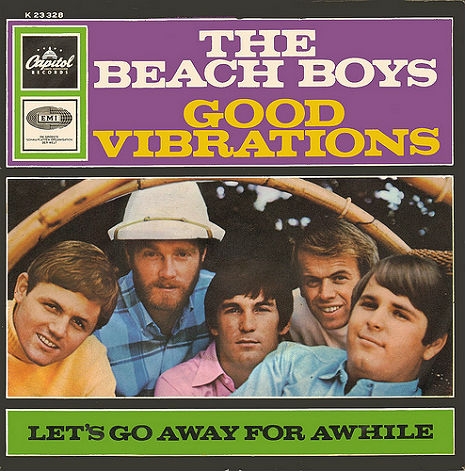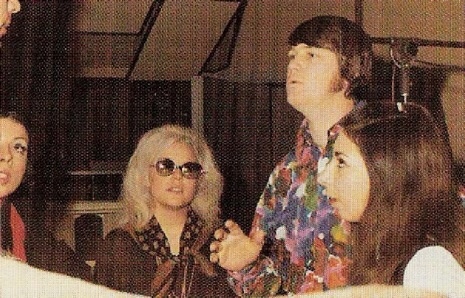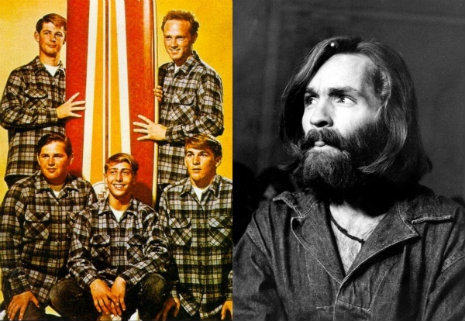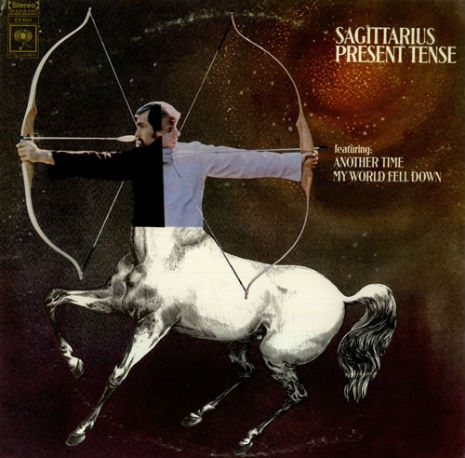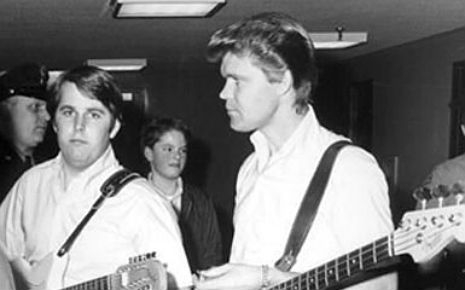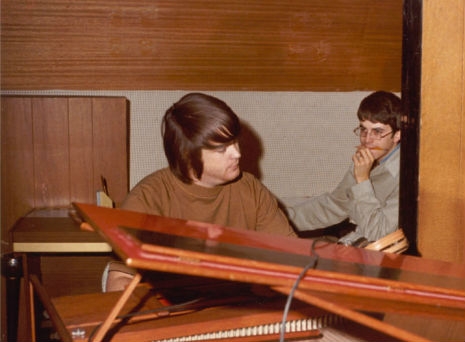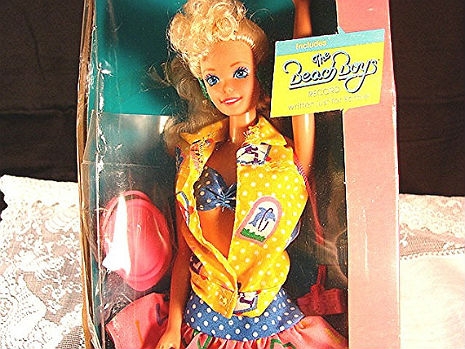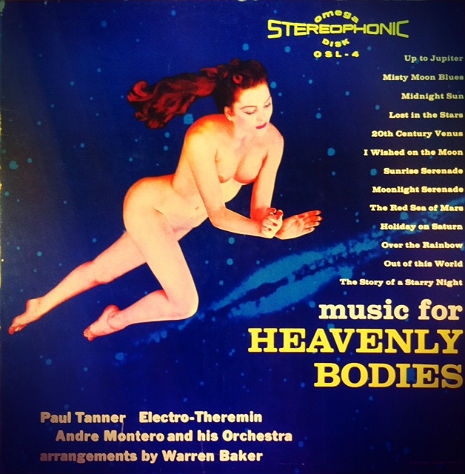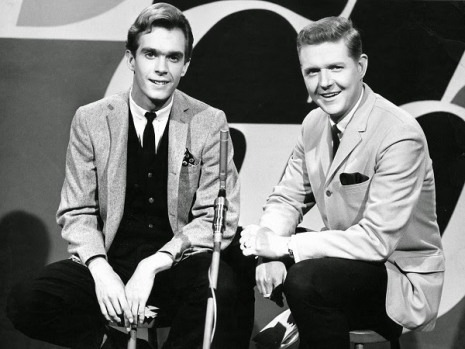
Canadian DJs Fred Latremouille and Red Robinson on the ‘Let’s Go’ set, 1964 (via Tom Hawthorn)
The CBC television series Let’s Go, which grew out of a segment on Alex Trebek’s Music Hop, brought the music of the Sixties into Canadian houses. Along with US and UK imports—Jimi Hendrix, the Yardbirds, Country Joe & the Fish, Eric Burdon and the Animals, et al.—Let’s Go promoted Canadian acts such as the Poppy Family and the Guess Who.
Apart from a sitar performance of “Downtown,” there is hardly any music in this special episode from 1968, a report on the effects of the “psychedelic revolution” on the Vancouver scene. The camera crew talks to local hippies and peeks inside a head shop and a coffeehouse, but most of the broadcast consists of celebrities arguing for or against acid rock and its cultural appurtenances. Timothy Leary, sitting in a field, pleads the case for consciousness change; Frank Sinatra Jr., interviewed on the soundstage, rails against the heads for making the Kingston Trio uncool. The Everly Brothers and Ray Charles also weigh in on the LSD question, and Al Jardine, Mike Love and the Maharishi put in a word for TM.
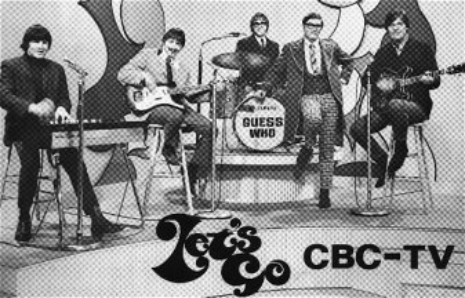
The show’s editor must have been a fan of “Tutti Frutti,” because this episode serves up a cold plate of revenge from its author. At 16:32, a clip of Little Richard is expertly deployed, interrupting Pat Boone’s windy sermon on the destructive power of Beatles and Stones lyrics and flushing the crooner’s sorry ass down one of those single-gender toilets of which he is so fond:
Oh, I think it’s great. I love it. I’m talking about the music. I think it’s fantastic. Because I think a person is expressing what he feels. He’s not going by anything that is written on paper. This man is playing, he’s not playing just for money, he’s playing because his soul within is driving him to push, to let his feelings go out in music, and I believe that it’s one of the greatest things that ever happened to the field of entertainment—which, psychedelic music is rhythm and blues, of course.
Naturally, my favorite philosopher, Richard Pryor, seems to know more than all the rest of the showfolk combined. Let his wisdom unfold your mind like a thousand-petaled lotus.
Watch it, after the jump…







